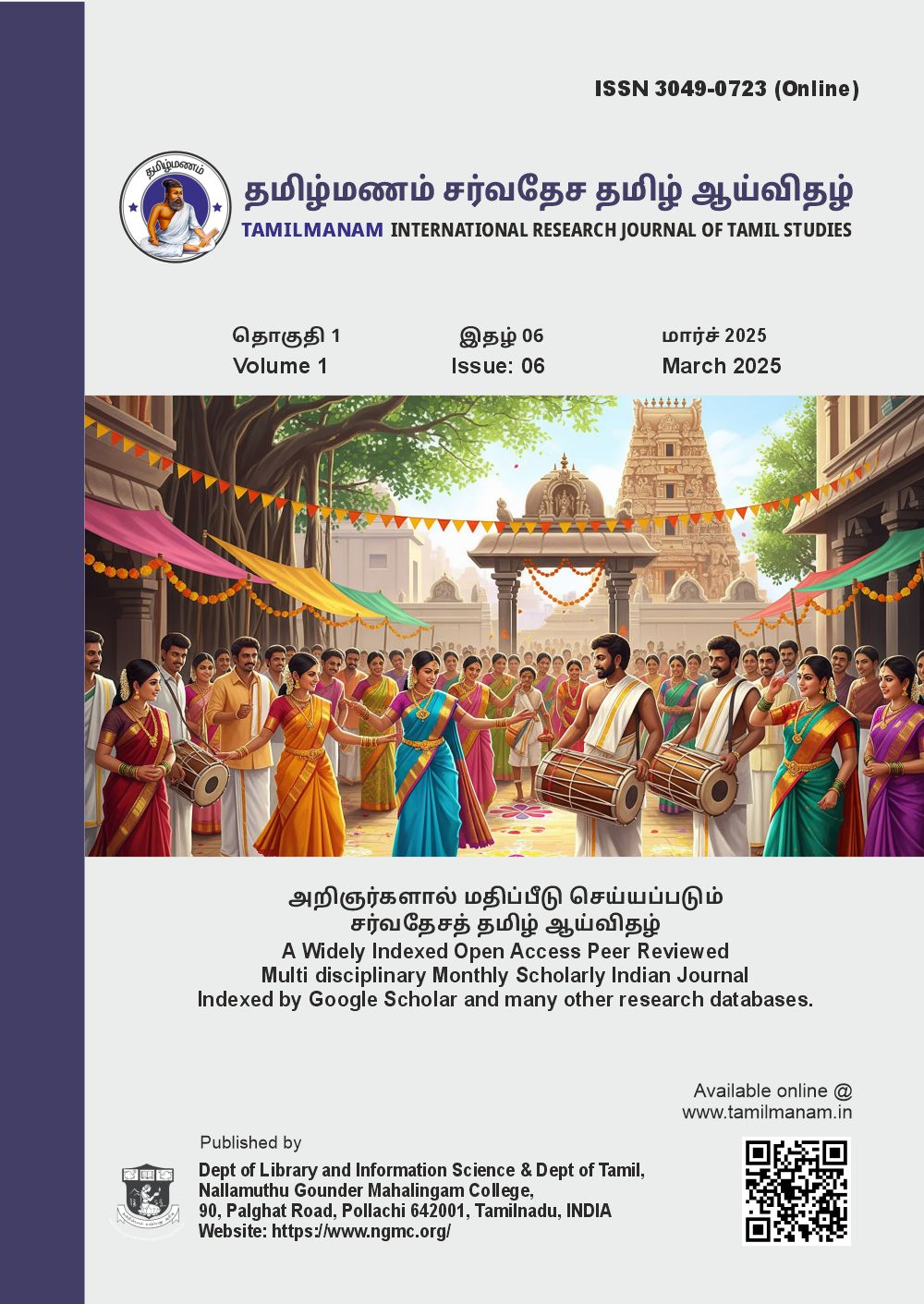Meditation in the Upanishads: A Deeper Look
உபநிஷதங்களில் தியானம்: ஓர் ஆழமான பார்வை
DOI:
https://doi.org/10.63300/ah54vs08Abstract
Meditation in the Upanishads is a spiritual practice that aims at self-realization and union with the divine. It is a journey from the external to the internal, from the finite to the infinite, from the temporal to the eternal. The Upanishads provide profound insights into the nature of consciousness, the self, and the ultimate reality, and meditation is the tool to realize these teachings. Through meditation, one can transcend the physical and mental realms and experience the state of pure consciousness, the state of blissful birth, as described in the Upanishads.
Downloads
References
Easwaran, E. (2009). The Upanishads. Nilgiri Press.
Goyal, M., Singh, S., Sibinga, E. M., Gould, N. F., Rowland-Seymour, A., Sharma, R., ... & Haythornthwaite, J. A. (2014). Meditation programs for psychological stress and well-being: a systematic review and meta-analysis. JAMA internal medicine, 174(3), 357-368.
Johnston, C. (1931). The Mâitrâyanî Upanishad: With Commentary of Sri Ramakrishna. Harvard University Press.
Olivelle, P. (1996). The Early Upanishads. Oxford University Press.
Swami Vivekananda. (2018). Raja Yoga. Advaita Ashrama
Downloads
Published
Issue
Section
License
Copyright (c) 2025 Dr. M.Vijayakumar, S Veerakannan (Author)

This work is licensed under a Creative Commons Attribution 4.0 International License.
Our journal adopts CC BY License Creative Commons Attribution 4.0 International License http://Creativecommons.org//license/by/4.0/ . It allows using, reusing, distributing and reproducing of the original work with proper citation.






